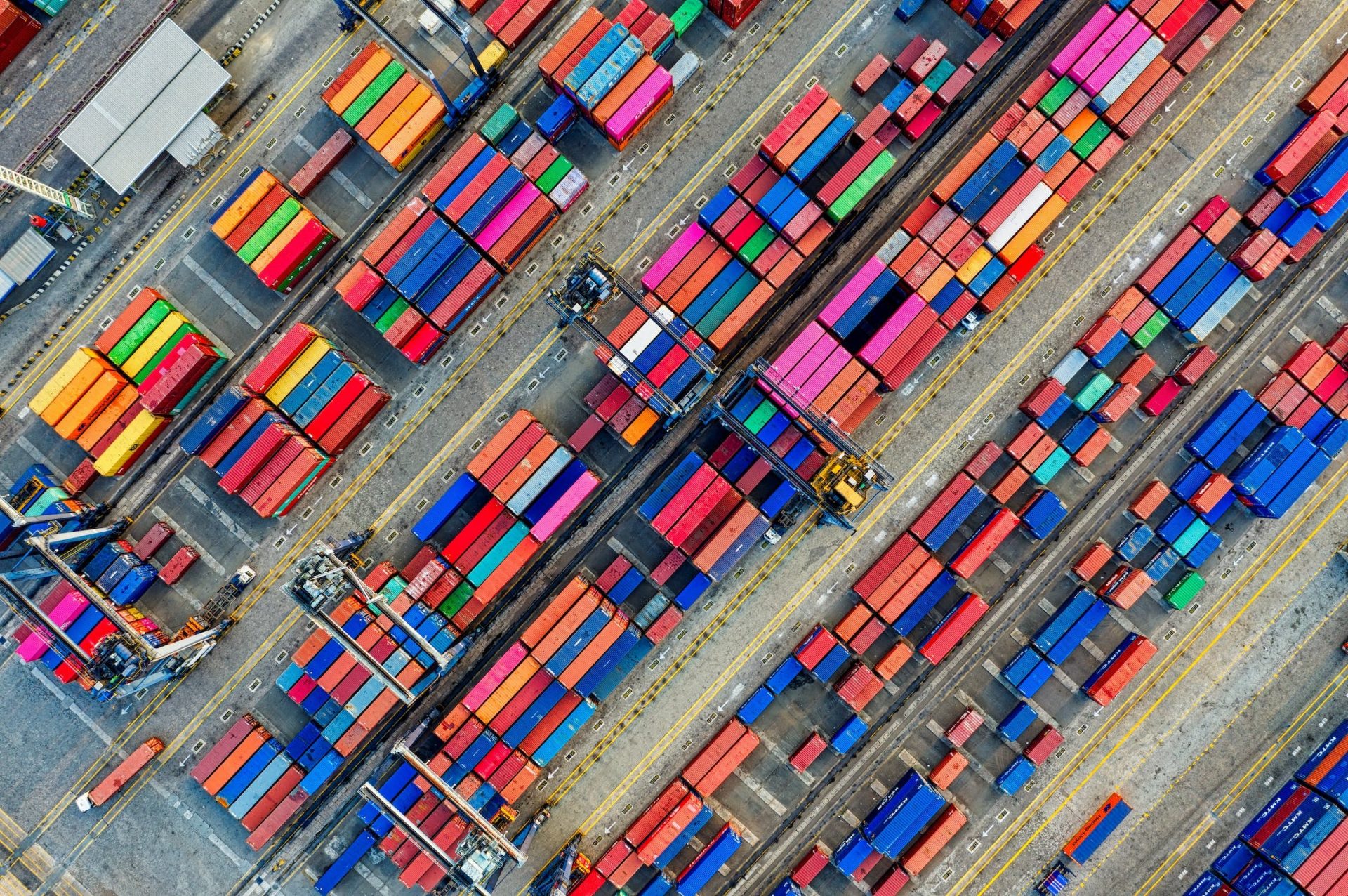How to Ensure Safe Storage of Your Goods in Transit
This is a guest post by Samuel Davis.
In the dynamic world of importing and exporting, ensuring the safe storage of your goods in transit is paramount. Every step, from packing to transportation, holds potential risks – and protecting your cargo means safeguarding your investments. As we look toward the future of ocean and air freight, such discussions must be held.

From adverse weather conditions to the hustle and bustle of handling, challenges abound. Still, there are essential techniques that can help fortify your supply chain, ensuring your goods reach their destination unscathed. Embracing these practices will shield your investments and pave the way for a seamless and successful trade journey. So, let’s delve into the world of safe storage, ensuring your goods arrive as they should – intact and on time.
Understanding the Risks
Initially, exploring this subject requires a clear understanding of the potential risks goods face in transit. As experienced readers, you likely don’t need details on this front, but an outline is still warranted:
- For one, weather conditions play a crucial role. Extreme temperatures or humidity can harm sensitive items. Therefore, proper temperature control, like climate-controlled storage, is vital.
- Physical damage is another concern. Rough handling or improper packaging can lead to costly losses. To counter this, secure packaging and careful handling are essential.
- Security is paramount, too. Theft during transit is a real threat. So, implementing robust security measures, such as surveillance and tracking systems, is imperative.
In brief, it’s these risks our exploration will hinge on. Comprehending these risks lays the foundation for a secure and successful transit journey, ensuring your goods reach their destination in optimal condition. And as supply chain disruptions remain likely, this robust foundation will often be necessary moving forward.
Safe Storage of Your Goods: Implementing Best Practices
Unfortunately, absolute security can never be guaranteed. Weather phenomena, accidents, mishandling, security breaches, and other risks can never be truly nullified. However, there are ample best practices that can help significantly.
Choosing the Right Storage Solutions
Of course, safe storage starts with choosing the right storage solutions. When it comes to containers and packaging materials, opt for sturdy options that suit the nature of your cargo. Reinforced boxes and cushioning materials provide an added layer of protection.
Evaluating storage facilities and warehouses is equally crucial. Ensure they meet security standards and are equipped to handle your specific goods. Keep in mind that Pack & Go Movers NY advises due diligence in this process, as they keenly understand the importance of secure storage.
Finally, climate-controlled storage is a game-changer for goods sensitive to temperature fluctuations. It provides a controlled environment, shielding your items from extreme conditions. Prioritize this option for items like electronics, perishables, and delicate materials.
Labeling and Documentation
Effective labeling and documentation are paramount. Proper labeling allows for easy identification of your cargo, ensuring it reaches its destination accurately. Detailed documentation also plays a crucial role in tracking and maintaining accountability throughout the transit process. It provides a clear record of the journey, aiding in any necessary investigations or audits.
Compliance with customs regulations and labeling requirements is non-negotiable. Failure to adhere to these guidelines can result in delays or even loss of goods. So, ensure all necessary information is accurately and prominently displayed on labels and documents. This is particularly important in the case of oversized cargo, as we’ve discussed before.
Monitoring and Surveillance
Robust monitoring and surveillance measures are essential to ensure the safe storage of your goods in transit. Installing security systems and cameras provides a vigilant eye on your cargo, deterring potential threats. What’s more, employing trained personnel for on-site monitoring adds an extra layer of protection. Their presence helps maintain a secure environment and ensures immediate response in case of any suspicious activity.
Additionally, leveraging advanced tracking technology allows real-time monitoring of your goods’ whereabouts. This technology provides valuable insights and alerts for any deviations from the planned route. Needless to say, prioritizing monitoring and surveillance is a critical step towards a successful and secure transit journey for your valuable goods.
Training and Education
Training and education are also pivotal. Staff members should be well-versed in proper handling and storage techniques. This knowledge equips them to securely pack, load, and arrange goods for transit, reducing the risk of damage. Moreover, regular safety drills and simulations reinforce these techniques. They provide practical experience in handling emergency situations, ensuring a swift and efficient response if the need arises.
In this regard, keeping employees informed about security protocols is equally crucial. This ensures that everyone understands and adheres to the established measures for safeguarding goods. A well-informed team is an integral part of maintaining a secure transit process.
Emergency Preparedness and Response
Any team can falter – and issues may still arise. So, in ensuring the safe storage of your goods during transit, being prepared for emergencies is paramount. This begins with developing contingency plans for unforeseen circumstances. These plans outline clear steps to take in case of unexpected events throughout the forwarding process, minimizing potential damage or loss.
Establishing robust communication channels for emergencies is equally vital. It ensures that timely information can be relayed and acted upon swiftly. Finally, collaborating with local authorities and emergency services enhances the effectiveness of response efforts. This ensures that, even in unforeseen situations, measures are in place to protect your valuable cargo throughout its transit journey.
Regular Inspections and Audits
Regular inspections and audits are crucial components of the process. Conducting routine checks for any signs of damage or tampering allows for immediate action if any issues are detected. This proactive approach helps to secure systems and prevent further harm or loss. Carrying out comprehensive audits of storage practices provides a thorough assessment of the security measures in place. It identifies areas for improvement and strengthens overall safety protocols.
Importantly, implementing corrective measures promptly is key. Any identified weaknesses or breaches should be addressed swiftly to maintain the integrity of the storage process. By adhering to these practices, you establish a vigilant system that continuously monitors and fortifies the security of your goods throughout their transit journey. This diligence ensures that your cargo arrives at its destination intact and secure.
Conclusion
Prioritizing the safe storage of your goods in transit is not just a precaution; it’s a smart business move. Weather conditions, physical handling, and security risks are ever-present challenges. By choosing the right storage solutions, implementing robust monitoring, and providing proper training, you build a strong defense against potential harm. Labeling, documentation, and regular inspections further fortify this defense. Being prepared for emergencies and collaborating with local authorities ensure a swift response in critical situations, while regular audits solidify the security of your storage practices.
Remember, safe storage of your goods isn’t just about protection; it’s about safeguarding your investments and ensuring your business’s success. By following these practices, you can confidently navigate the complexities of transit, knowing that your valuable cargo is in safe hands from start to finish.

This was a guest post by Samuel Davis.
Author Bio
Samuel Davis is a freelance marketer and SEO enthusiast with a keen interest in the relocation industry and logistics. He often writes about supply chain management and logistics challenges, with an eye on emerging technologies.





